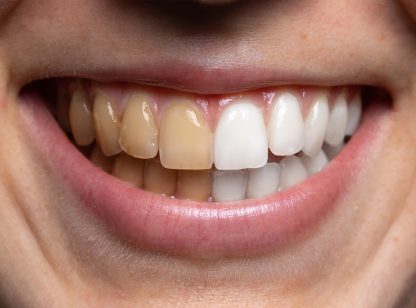Have you ever been told you may need a root canal but have no idea why? Many patients associate root canal treatment with dental pain. This specialized procedure is performed to treat infection and/or infection in the tooth’s pulp tissue, which consists of nerve fibers and blood vessels. During treatment, the damaged portion of the tooth, whether it be a fracture or decay, along with the pulp tissue will be removed, the nerve canals will be shaped and cleaned, and the root canals will be filled and sealed. After this procedure, the tooth may need a filling or crown to restore proper chewing function. Here are some common reasons a root canal may be necessary:
Fractured tooth. Have you ever bit down on something hard and felt a tooth cracked? In many instances, the crack is so small it may have only affected the outside layer enamel. However, if a fracture or crack propagates further into the pulp tissue, a root canal may be indicated. Treatment will depend on the severity and type of fracture that occurred.
Deep decay. Tooth decay forms when oral bacteria come in contact with starches and sugars from food and drinks, forming acid that attacks the enamel causing demineralization which can lead to decay. If left untreated for an extended period of time, the decay can continue to extend into the pulp tissue causing infection, inflammation and pain. Once the pulp is involved with decay, your dentist will recommend a root canal to treat the infected or necrotic pulp tissue (dead nerve).
Dental abscess. When infection inside the pulp spreads outside the tooth’s root structure and into the surrounding soft tissues and bone, a dental abscess can occur leading to swelling near the affected tooth, or sometimes beyond if severe. Some patients may even notice a bad taste in their mouth. An abscessed tooth may require a root canal to clean out the local infection and if necessary, the surrounding bone and soft tissue. The goal is to remove the source of infection, however, if the tooth cannot be saved, unfortunately the alternative is an extraction.
Deep existing restorations. Any time treatment is performed on a tooth, trauma occurs. If there is large decay or fractures, then deeper preparation will be required to remove the affected portions. Often those deep preparations do not involve the pulp of the tooth, and thus, a root canal may not be needed. Other times, due to deeper penetration into the tooth, the deeper structures near the pulp may become inflamed and cause symptoms leading to chronic pulpitis. When this occurs, your dentist may check the bite or see if there is anything that can be done to reverse the symptoms. However, if symptoms and inflammation do not resolve, then a root canal may be indicated. Other scenarios include restorations which start to leak or crack allowing bacteria to enter and infect the pulp tissue.
These are just a few of the reasons a root canal may be necessary. Of course, routine cleanings and exams are always recommended to identify conditions early and minimize the need for additional treatment.
Sarah Khoshniyati (“Dr. Sarah”) is a dentist with Palm Desert Smiles and can be reached at (760) 568.3602. Visit www.PalmDesertSmiles.com.

















































Comments (0)